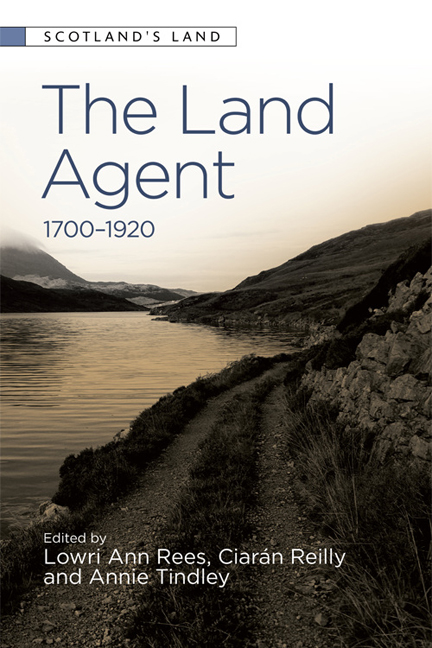Book contents
- Frontmatter
- Contents
- List of Figures
- Acknowledgements
- Notes on the Contributors
- Map of the British and Irish Isles
- Introduction
- Part I Power and its Constructions on Landed Estates
- Part II The Transnational Land Agent: Managing Land in the Four Nations and Beyond
- 4 Divisions of Labour: Inter-managerial Conflict among the Wentworth-Fitzwilliam Agents
- 5 The Courtown Land Agents and Transnational Estate Management, 1850–1900
- 6 Peter Fairbairn: Highland Factor and Caribbean Plantation Manager, 1792–1822
- Part III Challenges and Catastrophe: The Land Agent under Fire
- Part IV Social Memory and the Land Agent
- Postscript
- Index
5 - The Courtown Land Agents and Transnational Estate Management, 1850–1900
from Part II - The Transnational Land Agent: Managing Land in the Four Nations and Beyond
Published online by Cambridge University Press: 11 August 2018
- Frontmatter
- Contents
- List of Figures
- Acknowledgements
- Notes on the Contributors
- Map of the British and Irish Isles
- Introduction
- Part I Power and its Constructions on Landed Estates
- Part II The Transnational Land Agent: Managing Land in the Four Nations and Beyond
- 4 Divisions of Labour: Inter-managerial Conflict among the Wentworth-Fitzwilliam Agents
- 5 The Courtown Land Agents and Transnational Estate Management, 1850–1900
- 6 Peter Fairbairn: Highland Factor and Caribbean Plantation Manager, 1792–1822
- Part III Challenges and Catastrophe: The Land Agent under Fire
- Part IV Social Memory and the Land Agent
- Postscript
- Index
Summary
INTRODUCTION
THE NATURE OF ESTATE agencies across the four nations during the nineteenth century varied depending on the size and location of the estate, and the financial situation of the landlord. Large estates often included an estate office, managed by a sole agent supported by a network of sub-agents. Other estates were managed by agencies who worked for multiple landowners in a particular region, such as Hussey and Townsend, a Cork-based firm which managed eighty-eight estates in 1880. On smaller estates individuals such as the farm steward may have taken on the role of agent, and Sir John Benn-Walsh managed his Cork estate himself, despite living in England. In short, just as estates were not homogenous, neither were the agencies that managed them.
This chapter considers the management structure of a transnational estate during the second half of the nineteenth century, using the Courtown estate as a case study. It examines the roles of the agents, sub-agents and bailiffs employed on the estate during this period. It is hoped that the study will enable comparison with other estates within the four nations, leading to a deeper understanding of the role of the land agent during the Victorian period.
In the latter half of the nineteenth century the Earl of Courtown held approximately 23,000 acres of land across Ireland and England. His estates included 14,426 acres in Wexford, 7,395 acres in Carlow and 1,493 acres in Saltersford, Cheshire. The estates consisted of distinct locations in Ireland, namely Ballybeg, Bolinrush, Kiltennel, Medophall and Tara Hill in County Wexford, as well as land in County Carlow, and Saltersford in Cheshire.
Figure 4 shows the Courtown estate's administrative structure c. 1858. There were two main agents at this time, both of whom reported to the Earl of Courtown. One, based at the estate office near Courtown, was responsible for the Irish estates. The second, located in Leicestershire, managed the English estate. The head agent for the Irish estates was supported by a sub-agent in Carlow. The agents and sub-agents were assisted by bailiffs, individuals who lived in each distinct area of the estate, providing the agents with local knowledge and passing on messages from them to the tenants.
- Type
- Chapter
- Information
- The Land Agent , pp. 93 - 108Publisher: Edinburgh University PressPrint publication year: 2018



